Stripe vs Square: The battle of the 2 payment processor giants
Invest a little bit of time reading up on Stripe and Square, and you will begin to see the parallels of these two payment processors. They are like Katy Perry and Taylor Swift - media favorites who have reformed pop music. Likewise, Stripe and Square have reformed the way consumers pay for stuff, and the way retailers receive payment. They’re both using cutting-edge technology and depending mainly on machine learning to propel their payment processing systems.
However, stripe and Square each have their distinctive range of features built to suit very different needs. The primary distinction when contrasting Square and Stripe is that Stripe requires technological expertise and needs to be installed on a separate platform to receive purchases. On the other hand, Square needs little to no technical knowledge and provides a free website that has seamlessly built-in Square payment processing.
So, in short:
- Square: Best for individuals, physical stores, and infrequent online sales.
- Stripe: Perfect for tech-aficionado startups and rising e-commerce firms.
Let’s delve deeper into both Stripe vs. Square, so you can make a more educated decision for your company.
An overview of Stripe
In short, Stripe is a payment processor, which means that it facilitates the electronic transfer of money from the customer’s bank, aka issuing bank, to the bank of a retailer, aka acquiring bank, in order to pay for products or services obtained using a credit card. Yet, it would be an understatement to assume it is the only function of Stripe.
As we described above, Stripe is acclaimed for its state-of-the-art developer tools that enable company owners to use a plethora of different programming languages to implement and configure their payment processing solutions.

| Pros | Cons |
|---|---|
| Flat-rate and competitive fees, with top solutions | Issues with frozen or canceled accounts, especially for companies in riskier sectors |
| No extra costs for setup, termination, management of the account, etc. | Fewer choices for in-person payments |
| Instantly and conveniently sign up for an account online. | May demand tech knowledge or developer resources to customize |
| Scalable with multiple choices for integration | No PayPal |
| Best for payments made internationally |
Stripe is an excellent payment processing choice for any service provider or e-commerce business or that wants to collect invoices or recurring payments online if you have a group of developers. Target, Blue Apron, Glossier, Lyft, and thousands of other startups, growing firms, and enterprise-level companies use Stripe.
Stripe has more than 300 integrations, stable APIs, and thorough documentation of instructions, making it a perfect choice for organizations looking to develop a personalized checkout solution to bring to their website.
Further Reading: Stripe Review - Is It The Right Payment Processor?
An overview of Square
Primarily, Square enables merchants to accept mobile credit card payments via a plastic dongle that you can insert into a phone port. Square takes a share of the cost, just like a credit card business (2.60%/swipe + 0.1$ for card-present payment; 3.50% + 0.1$ for manually-keyed transactions). It also has other products, software, and point of sale facilities that make it look like a cash register of the future.
Let’s see how Square works.
- When the buyer makes a purchase, the seller inserts the transaction into the point-of-sale (POS) square and present to the buyers the amount needed.
- By swiping/dipping their credit card or tapping their NFC-equipped smartphone on the Square Reader or Square Stand, which collects the buyer’s account details, the buyer pays for the purchase.
- The Square POS sends the payment transaction details to Square (serving as the payment service provider, or PSP for short)
- Via an internet connection, Square transfers the payment processing details to the Acquiring Processor. Square then pays the Acquiring Process a nominal fixed fee per purchase.

| Pros | Cons |
|---|---|
| Low fixed-rate | Not so good customer support (Compared to Stripes’ standards, but still fascinating compared the industry’s standards) |
| No weekly or quarterly expenses | Expensive add-on services |
| No Deal | Flat-rate rates for bigger organizations can be costly. |
| All-in-one feature-rich framework | High-risk firms might not be approved |
| User-friendly design | |
| Offline payments | |
| Free Swipe Card Reader | |
| Free POS App | |
| Fast deposits within two business days, |
Square is one of the best payment providers you can pick for most small firms. It is exceptionally user-friendly and brings together all you need in one free kit to accept purchases online, in-store, and by smartphone. Square’s free software is an unparalleled value for individuals or organizations with just a few staff members requiring a solution that you can introduce quickly and handle yourself.
Stripe vs. Square: Full Comparison.
| Stripe | Square | |
|---|---|---|
| In-person payment processing | 2.7% + 5 cents | 2.6% + 10 cents |
| Online payment processing | 2.9% + 30 cents | 2.9% + 30 cents |
| Hardware | Better for online businesses | Better for brick-and-mortar businesses |
| Software | Better for online businesses | Better for brick-and-mortar businesses |
| Ease of use | x | |
| Options for payment | x |
Stripe vs. Square: Features.
| Stripe | Square | |
|---|---|---|
| Overall | Cutting-edge developer features | Plug-and-play, friendly for users solution |
| Best for | Mainly Payment Processing: Stripe needs connecting to a website or e-commerce platform | One-stop-shop: Square has a free online store and free POS software |
| Checkout screens | Customize to your needs. | Follow a template |
| POS system | x | Free |
| Mobile payments app | Not so helpful | free |
| Invoice management | V | V |
| Accepts all major credit and debit cards | ACH, WeChat Pay, Alipay, international payments. | PayPal, gift card solution, Square Pay, |
| Customer support | 24/7 support via phone | Limited-hours support |
The chief factor you’d use either provider is, of course, to handle non-cash payments. Both Stripe and Square are third-party processors, indicating that they collate all their customers into a single merchant account. That makes it easier to get approved but at the expense of account stability. Being third-party processors also makes them a bad match for organizations that are considered high risk. Let’s delve deeper into both Stripe and Square.
Stripe
One of the most key highlights that Stripe delivers is its widely accepted payment options. If your customer chooses to pay in a certain manner, your Stripe payment platform will almost certainly have the means needed for them. Payment choices are as varied as Discover Card to Microsoft Pay with ACH transfers, and nearly all in between.
Plus, Stripe provides Stripe Sigma with centralized financial statements, built-in reporting, and consumer reporting. With QuickBooks and tax filing integrations to boot, Stripe will also provide accounting assistance.
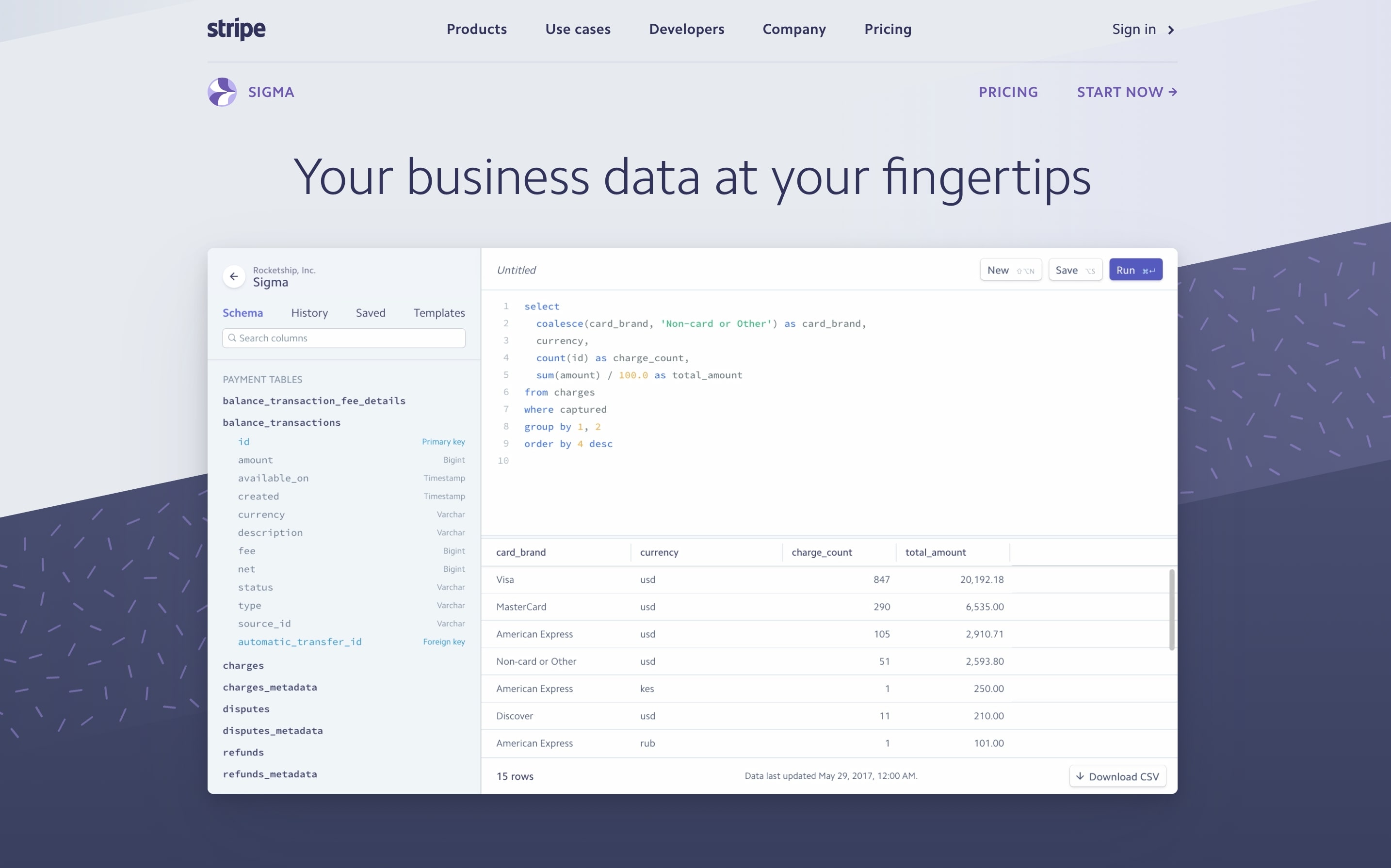
Lots of people may complain that Stripe does not provide a POS. It seems that Stripe is not looking to fight intensely in the POS field. However, via Stripe Terminal, Stripe does support POS payments.
Stripe Terminal is not a comprehensive suite of custom software and hardware, but rather development tools that you can take to incorporate Stripe into compatible POS apps. If you are still in Stripe’s ecosystem, it’s not a poor choice, and with Square’s base rate shift, Stripe’s 2.7 percent + $0.5 seems a ton more competitive.
The offers by Stripe include:
- Stripe Billing: In short, Stripe Billing helps you bill customers and monitor subscriptions. It sends custom invoices, and customers’ request payment. Stripe Billing also enables you to generate recurring, usage-based, promotional, tiered, scheduled payments.
- Stripe Connect: A network and application toolset, and also a payment platform for massive e-commerce marketplaces.
- Stripe Payouts: An Automation set of tools for manufacturers and companies across the globe for mass payouts.
- Stripe Atlas: A service for foreign corporations that would like to be expanding into the US. Stripe Atlas also has a toolkit for them to do so.
- Stripe Relay: A series of tools to create mobile marketplaces by adding your eCommerce catalogs to your smartphone or uploading product details. It is an API to boost mobile in-app purchases.
- Stripe Issuing: Stripe can create physical and virtual cards used for mobile wallets or employee payrolls.
- Stripe Corporate Card: Your credit cap is dependent on your company’s money processing and bank records. In free payment processing, customers will receive $50,000 when they spend $5,000 on the card
- Stripe Sigma: The SQL-powered reporting framework, which is even more comprehensive than Square’s reporting tools (they are all fascinating). It is also highly efficient in writing SQL-queries.
Square.
Square online payments emerge with many of the draws that Square in-person payments offer: They offer fast deposits, analysis tools, and PCI compliance. Even more great advantages are introduced to the list if you choose to start building your online store through Square Online and take online payments through Square.
If you sign up for a paid online store package, you will be able to use personalized website templates, a top-rated mobile app for back-end monitoring, and a free domain name (custom) for a year. Plus, shipping labels, order tracking, predictive analytics, and marketing software would help you monitor them with ease.
Square gives one explicit function that Stripe does not: POS. Square provides a free version of the POS app, and you can also opt for premium packages primarily designed for retail and restaurant companies. You may conduct essential business-related functions by Square POS, such as handling inventory and staff, providing information on the sales figures, and offering incentives such as gift cards and discounts.
Square will give you their patented mobile credit card reader for free when you start creating a Square account. But the hardware possibilities of the Square POS are more than that. Here are some of the more common hardware choices for Square POS:
-
Square Register: Square’s most powerful POS hardware, Square Register, is a customer-facing display providing an all-in-one countertop payment processing device. Square Register approves magstripe cards, contactless payments, chip cards, and the Square POS app is included in the hardware.
-
Square Terminal: The very convenient all-in-one POS terminal provided by Square is called Square Terminal – a mobile device that can accept all the payment types as Square Register and can connect via USB, Ethernet, or WiFi.
-
Square Stand for Contactless and Chip: This one is self-explanatory — it’s a stand that you can attach to your iPad. After you have downloaded the app for Square POS to your iPad and attach the included hardware, you can turn your iPad into a part of your business’s POS system.
-
Square Card Readers: Square has an external hardware collection, built to accept different payment types — together with the mobile magstripe reader, Square has a chip card and magstripe card reader, a chip card and contactless payment reader. It is also great to know that Stripe will provide a magstripe card reader free of charge when you sign up.

Additional services from Square include:
- Square Appointments: Team program schedule.
- Square Retail: An iPad inventory management device.
- Square Restaurants: An advanced POS system for packed businesses.
- Gift Cards: Square allows you to grant gift cards online at no charge.
- Customer Reviews: Square collects feedback from the clients.
- Web Hosting: Host your e-commerce website on Square.
- Email Marketing: Square helps you send newsletters and exclusive deals to your subscribers
- Loyalty Program: Square’s loyalty program helps you to select a variety of distinct benefit rewards packages for your customers
- Advanced Reporting: Square provides some of the best online reporting resources you can find, but not quite as powerful as Stripe’s Sigma.
- Multilocation Management: you can control several physical stores with a single account.
Stripe vs. Square: Pricing & Fees
| Stripe | Square | |
|---|---|---|
| Online card transactions | 2.9% + 30 cents | 2.9% + 30 cents |
| In-person card transactions | 2.7% + 5 cents | 2.6% + 10 cents |
| ACH debit transactions | 0.8% ($5 cap) | N/A |
| Recurring / card-on-file transactions | 2.9% + 30 cents(Plus 0.5% after first $1 million) | 3.5% + 15 cents |
Takeaway: the Square and Stripe draw for e-commerce order pricing. Plus, both of them have no annual, startup, cancellation costs, or monthly minimum. You only pay per purchase (unless you want to add additional features), and all contracts are month-to-month.
Stripe gives a greater return than Square on recurrent or card-on-file purchases for organizations that do daily invoicing or work on a subscription basis. Stripe also welcomes ACH payments, sometimes known as EFT or bank transfers. For huge invoices and annual membership fees, ACH payments are a much more effective financing method.

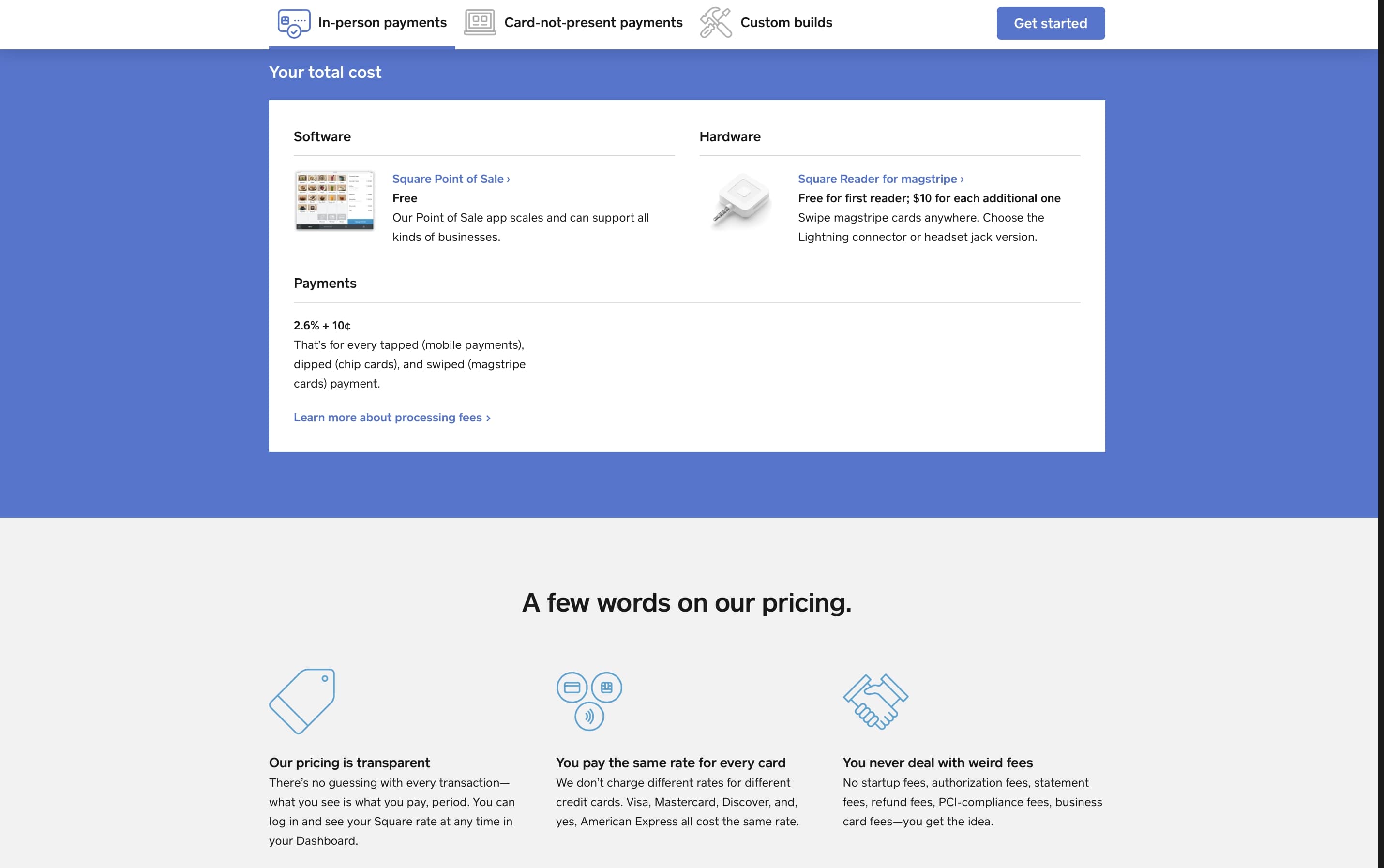
Stripe vs. Square: Ease of use
Developers’ tools.
Being giant payment processors, both Square and Stripe provide potent APIs (Application Programming Interface) for any developers on your staff. It’s not so much a matter of which provider benefits developers best, but which ecosystem fits the organization best.
Stripe is much beloved by developers for its simplicity, comprehensive documentation, and support for numerous computer languages, both on the web and smartphone applications. Stripe Elements allow you to build a completely custom form with pre-built components, while Stripe Checkout creates a pre-built form with a few lines of JavaScript that you can simply drop into the web. Stripe features a variety of APIs for other purposes besides mobile web and in-app payments.
Dev tools from Square allow you to build almost any custom integration you might require. There are two APIs for eCommerce: Checkout and Transactions. Square Checkout is a pre-made method that you can drop on the web with minimum hassle. Using Checkout means merchants are qualified for some extra benefits, such as chargeback security and next-day deposits. The Transaction API, paired with Square’s payment form, is more user friendly. Square also accepts purchases based on applications and supports SDKs for iOS, Android, and Flutter.
Getting set up.
Stripe setup.
Setting up a Stripe payment experience on your website varies from being surprisingly easy to too complicated, relying on what you need your payment gateway to do. And this also appears to be one of the defining characteristics for Stripe.
The developer-centric priority provides you the versatility to create a personalized checkout process for customers. With Stripe Elements, you rest assured your customers input their information quickly and accurately owing to real-time verification, dynamic localization, autofill features, and enhanced formatting and masking.
Better yet, Stripe Elements rid you of the hassle of a hosted payment page on your website. Just generate your checkout form or insert a Stripe donate button to your page to retrieve money from people with minimal effort.
Don’t hesitate if you don’t have a great deal of technical experience or a developer on your team to support you. All you have to do to use Stripe is copy and paste a line of JavaScript into your website. And if you’re using Stripe for WordPress, downloading an open-source Stripe plugin is all you have to do.
When you use Stripe because of its elegant dashboard, handling money paid on your e-commerce platform is also simple. You can get a brief snapshot of site operation, real-time charts, and even see if you need any acts, such as unanswered questions or identity verification (needed for preventing credit card fraud).
Square setup.
On the contrary, with Square, everything is concentrated on simplicity. There is one centralized system with all the tools you need to accept payments and monitor your business. In addition, directly from the dashboard of your Square account, you can use advanced monitoring tools, control schedules, and even build marketing campaigns:
When it comes to setting up Square goes, there are a few different options. You can cut and paste a bit of code (just like Stripe) to begin and build a paycheck option right on your website or you can use pay stub generator. If you want to expand your e-commerce website and allow different types of payments, you can use a plugin like WooCommerce Square.
But the most straightforward option, perhaps, is to create your very own Weebly shop.
In April of 2018, Square purchased the Weebly e-commerce platform and merged its payment gateway right into it, so there is no to configure anything once your Weebly site is up and running. Weebly is entirely hosted, unlike a self-hosted WordPress website, meaning you never have to stress about locating the proper web hosting service for your domain.
Overall, Square is a simple omnichannel solution for retailers who want to sell anywhere without working with complex code or a lot of integrations from third parties.
Bottom line.
Square has founded its imperial power on the aim of simplicity. All of the applications, and centralized monitoring, fit well together. Although the premium iPad POS systems (Retail Square and Restaurants Square) have interfaces built specifically for their respective niches, it is very straightforward and intuitive to use Square POS, aka the free smartphone point of sale app.
Using Square, you can easily take any kinds of payments, and you only need to integrate Square into your online store. Bear in mind, though, that the eCommerce store’s sophistication depends on which shopping cart program you use. Control over payment information — from the POS app, your online store, receipts, and any other channel — is all tightly controlled under the Square dashboard.
Stripe, on the other hand, is more complicated. Stripe may not be as easy to use as Square, particularly for users who are not precisely tech-aficionados with too many features and a developer-first priority. That is the essence of the beast. Though there are ways to set up Stripe without typing in any code, such “plug-and-play” integrations aren’t the service’s defining feature. If you have successfully get Stripe up and going, Stripe is very user-friendly, but it’s very tough to top Square in this arena.
Stripe vs. Square: Customer support
Stripe’s customer support.
When it comes to client service, Stripe hasn’t always had the best credibility. Stripe customers had not been able to access help in real-time before 2018.
Happily, after years of not being able to talk to a real expert in real-time, in 2018, Stripe’s users can enjoy 24/7 live chat and mobile support to supplement the new email support provided during business hours (Mon-Fri 9 am-5 pm). And there’s the Freenode platform (#stripe) if you want to get in contact with fellow Stripe users. That kind of organizational improvement is a huge investment, congrats Stripe.
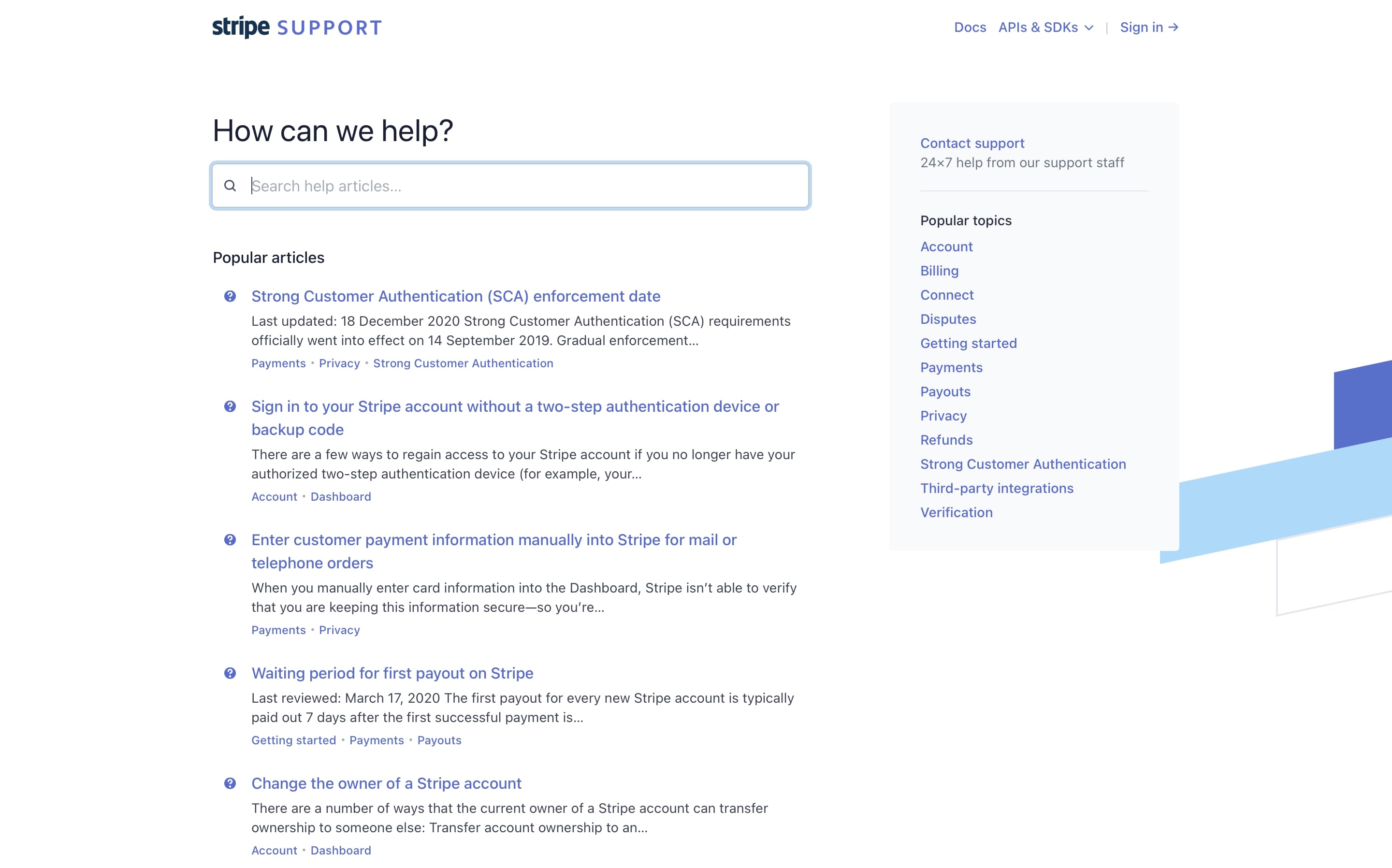
It’s fair now to conclude that Stripe does quite well when it comes to customer service, particularly when it comes to the quality of support from Square. Stripe also has self-service knowledgebase, though I don’t find it as detailed or extensive as Square’s. Stripe’s documentation is still very sophisticated, and it addresses most of the pressing problems from users.

Stripe still providing premium services starting at a massive $1000/month, which is nice for big corporations handling many payments but not so ideal for small firms with limited budgets, is one factor that may put some people off.
Though it may not seem reasonable to those that can’t afford $1000/month, we feel Stripe more than compensates for it with their 24/7 live chat and phone support that everyone can use.
Square’s customer support.
Like any processor, Square has merchants’ phone and email support as well as a thorough knowledgebase (which is fantastic) to answer frequently asked questions. In addition, Square also runs a dedicated Twitter support: @SqSupport
However, what makes Square’s customer service unique is its Seller Community, a community forum for anything about Square. It is a potent tool, and as far as I am concerned, you can find the answers to most of your problems in the form of other Square merchants as well as from Square’s support team.

Square goes by the motto that everything must be straightforward and easily understandable for everyone, no matter their skill levels. They have Square Guides filled with thorough yet simple documentation to help you get started.
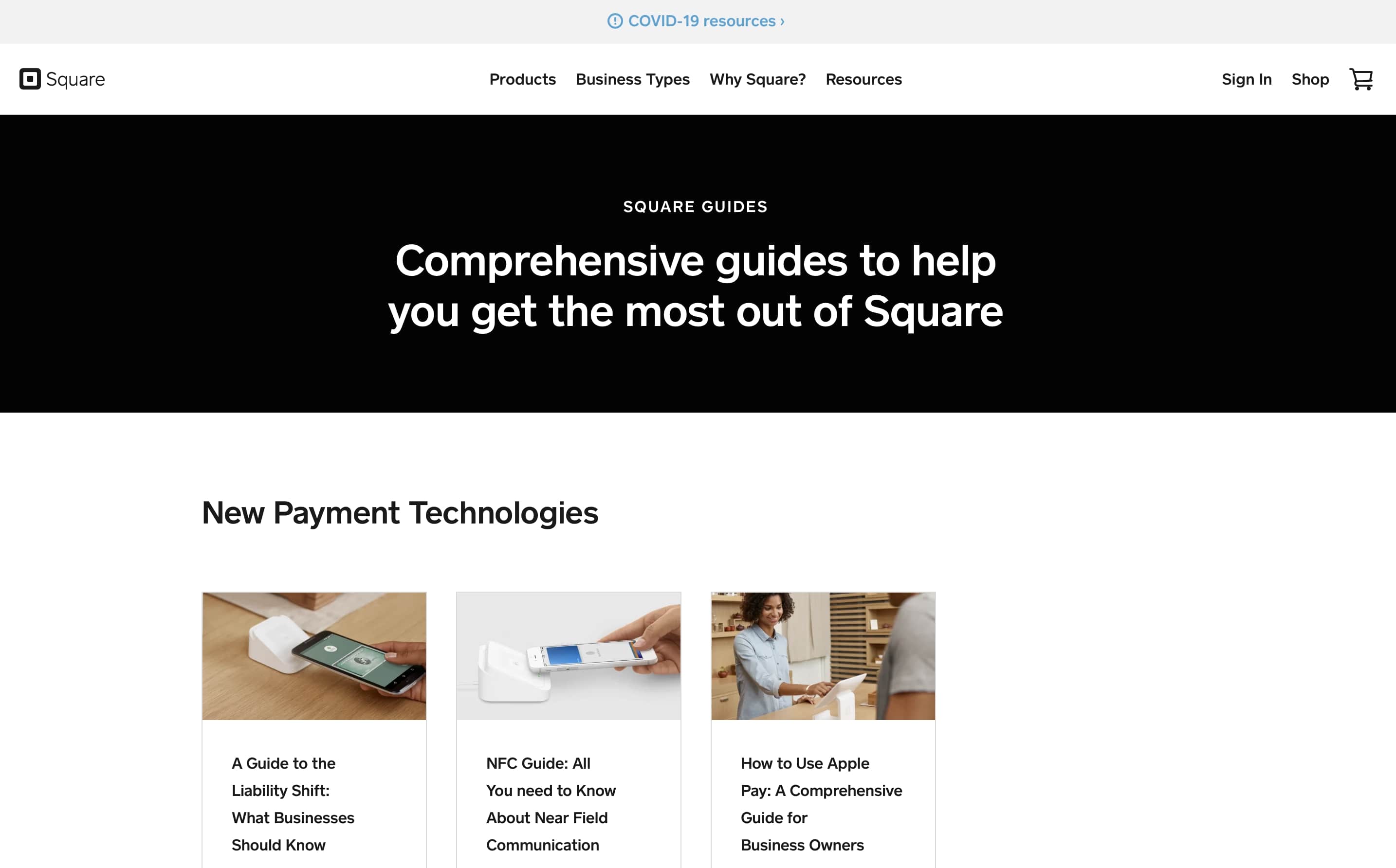
And if you’re a developer, check out , Developer Docs and Developer Blog
All in all, Square has support for both companies that has just started and the senior ones. In contrast, Stripe sticks mostly to advanced documentation that helps people create fully customizable checkout experiences on their websites.
Also, Square has Stack Overflow, explicitly built for questions about Square items and replies to them. Square’s customer service is, of course, imperfect; you may see customers complaining about the quality from time to time. However, it is safe to say that Square’s customer support’s harshest complaints are from terminated accounts’ merchants. If your account is terminated, Square will cut off access to phone support, and you can only communicate with them via mails.
Stripe vs. Square: Payment types.
Stripe’s payment types.
Stripe has made great strides in making sure that you do not have to bother with other merchant accounts when you use their service. Here are the lists of payment types you can take using Stripe.
- Credit cards.
- International cards.
- Debit cards.
- ACG direct debit and credit (Square does not have this one).
- Wire transfers.
- Bitcoin (indicating that Stripe is not hesitant to explore new things and get engaged in modern technology. Also, you can create a button for Bitcoin donation using Stripe)
- Masterpass by Mastercard and Visa Checkout. You know, Visa and MasterCard take up an astonishing 80.1% of the card network, so Stripe having it is really of great value.
Stripe also supports nearly 140 different currencies, so reaching an international customer base will never be a problem. The only downside to using Stripe is that there is currently no way for you to accept in-person payments.
Square’s payment types.
Over the years, the distinction between Stripe and Square has become more necessary as Square has extended its offerings to accommodate enterprises’ demands who wish to do business both in-person and online.
Square processes all popular credit cards online:
- Visa.
- Mastercard card.
- Discover.
- American Express.
- Plus, Square accepts payments from Apple Pay, Android Pay, and eWallet. The thing that Square has, but Stripe doesn’t, is the checkout hardware. And the best thing is that the card reader and POS are 100 percent free for accepting mobile payments in person.
Stripe vs. Square: Integration
When it comes to Integration, both Stripe and Square have more than enough for you. To be honest, I think you may need to resort to tools to scan through the impressive number of integrations that they possess. However, for the most part, Square probably has an advantage when it comes to major integrations.
Stripe
Stripe centralizes its official integrations on the Partners page, the site you can find extensions from first parties, accounting synchronization, POS system software, eCommerce platforms, customer management extensions. Stripe also has a program called Stripe’s Partner program to build a custom app for your own.
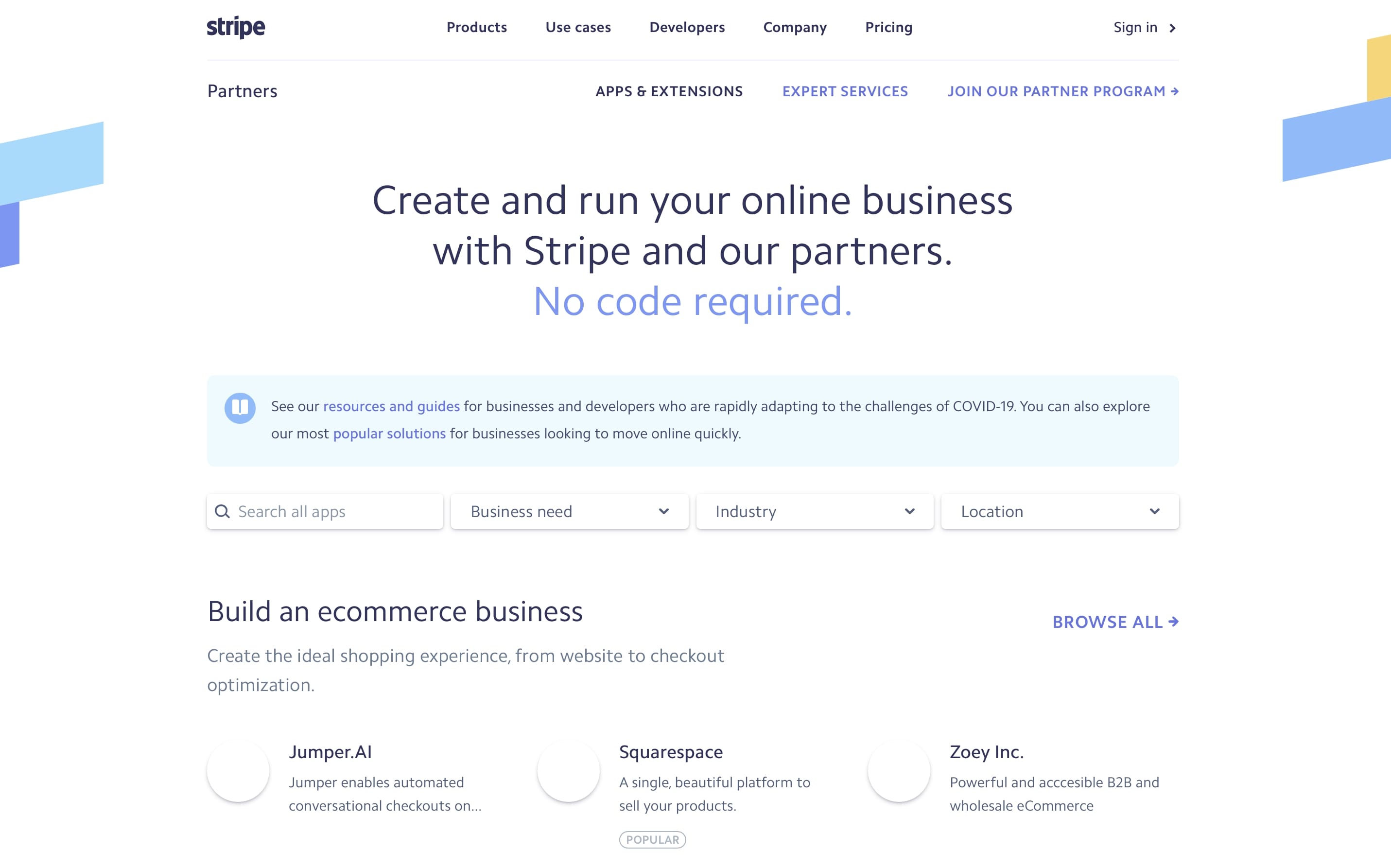
Stripe is relatively flexible. For example, you can integrate Stripe with a handful of shopping carts such as Ecwid, Easy Digital Downloads, and X-Cart. Stripe also operates well with several e-commerce platforms such as Squarespace, WooCommerce, Shopify,
The Stripe’s teams developed Stripe for online sellers, that is why Stripe can connect to almost any website type, online sales, or e-commerce platform. In other words, it is easy for you to scale your online shop with nearly 100 apps to enhance your company’s payment process.
Stripe & WordPress/WooCommerce
There is no Stripe’s official WordPress integration or plugin. But to make up for that, there are quite many plugin developers in the WordPress community who have rendered integrating Stripe into a WordPress site a piece of cake.
Here are some common ways to set up Stripe for WordPress: • One-off payment page on a basic WordPress site that does not have e-commerce functions. • Form plugin such as Gravity Forms to collect deposits, donations, take payments. • Easy Digital Downloads - a well-known platform for those selling digital products.
Square
Just like Stripe centralizing its official integrations on the Partners page, Square puts all the integrations in the Square App Marketplace, which is great because they can be overwhelming at times. Square Integration includes tools for accounting, invoicing, POS eCommerce, stock monitoring, recurring billing, etc. Recently, Square has introduced more integrations focused on specific industries, such as healthcare management.

Square is the only payment gateway that automatically connects to Square payments, and best of all, it’s free. Square also works with an e-commerce platform (Weebly) and provides Square payments with a platform for everyone, a thing that is hardly seen among its competitors.
Square is intended to be an omnichannel solution that has e-commerce functionality. And although you can’t tailor as many kinds of stuff as with Stripe, Square is still beginner-friendly enough to be used by anybody and sophisticated enough to be used by developers or large companies.
For those only starting out, Square has Wix, BigCommerce, Weebly, 3dCart, and Ecwid integrations. For those demanding more, Square still meets your needs well with Magento, Drupal, WooCommerce, and custom-built websites.
Square and WordPress/WooCommerce
Square provides simple and quick integration into your existing WordPress.com. You need to have a premium plan of Business WordPress.com (begin at $25/month) and one Square-supported e-commerce plugins for WordPress (WooCommerce or WP EasyCart are good)
In case your website is a self-hosted WordPress.org, you can still integrate Square with your shop, just like the way you do with Stripe. For example, WooCommerce Square helps you synchronize stocks’ data and products’ details between Square POS and WooCommerce.
Bottom line
-
If you are a multichannel seller, Square is a better fit for you.
-
If you are an online-only business, Stripe is the one to go because Stripe accepts more currencies and also more payment types.
Stripe vs. Square: Security
Stripe.
At first glance at BBB site, it is not hard to see complaints about Stripe’s lack of fraud protection. Merchants say on BBB site that they do not feel Stripe has given them a way to protect against fraudulent chargebacks. Though merchants can have some tools installed to help with that problem, sadly, most of them come at a pretty hefty price tag.
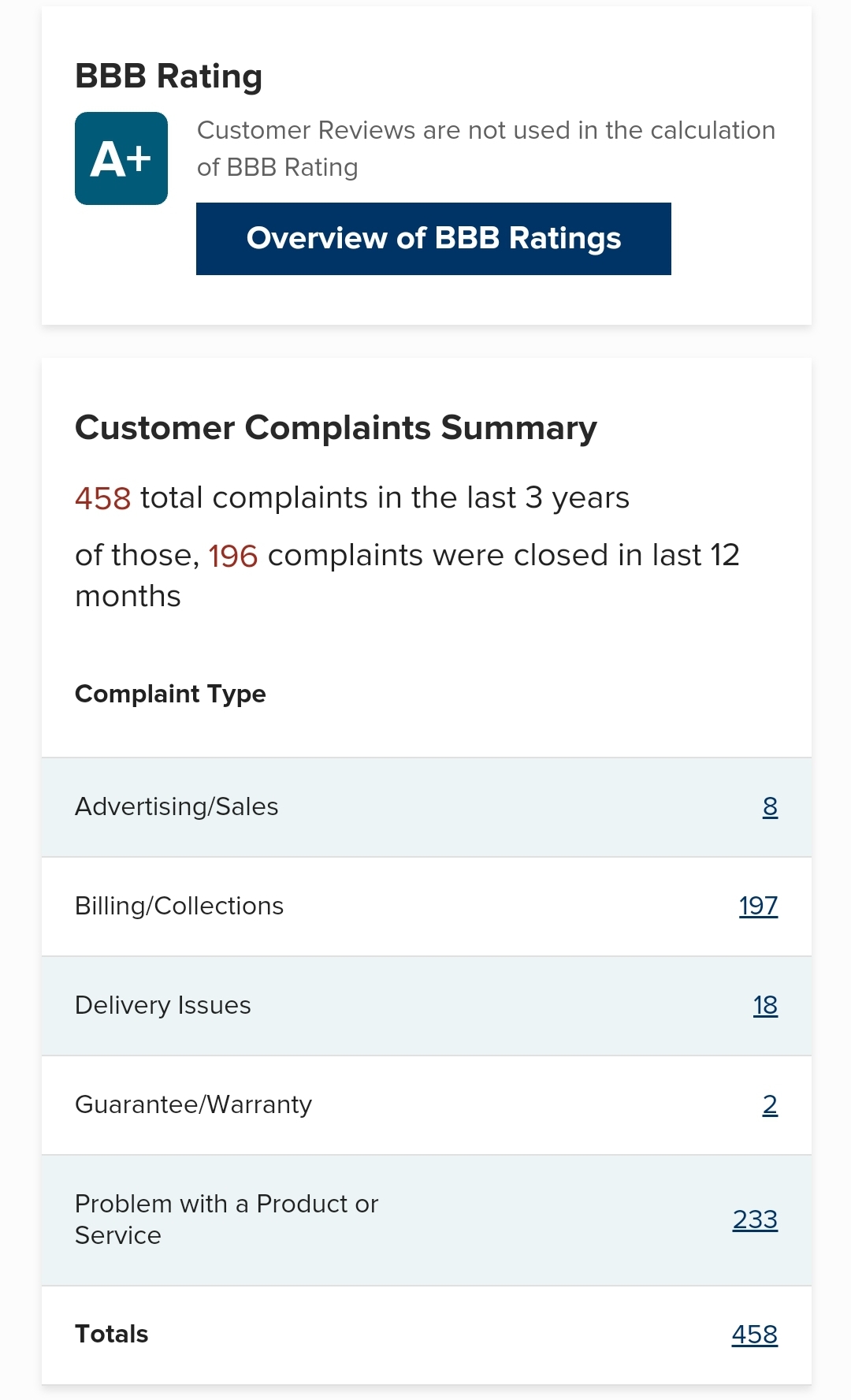
This issue is not something to be taken lightly. Here is how the system works: Stripe uses an automatic algorithm to identify fraudulent transactions that they deem fraudulent and label them. After all, it is not flawless, and the system can generate false positive reviews. If you find a declined transaction that you think is legitimate or vice versa, you can always override it and try again.
You can also flag transactions as fraudulent and refund them on your own, but do not forget to report it to Stripe. Second, you can turn to AVS (address) checks (Address Verification Service) and CVV (Card Verification Value) and automatically decline transactions that they don’t recognize as legitimate. However, currently, it is not hard to see legal shoppers getting their zip codes incorrect. You can’t enable these checks by default, so you have to “get your hands dirty” and adjust your settings yourself.
Square.
Freezes and terminations account for the majority of the complaints about Square’ security. Square’s intensive (sometimes aggressive) fraud prevention has deprived many small companies of the right to access their money because the algorithm has marked their transactions a general red flag (which can occur for many reasons). The problem may be attributed to Square’s not adequately telling users the risks in using third-party processing.
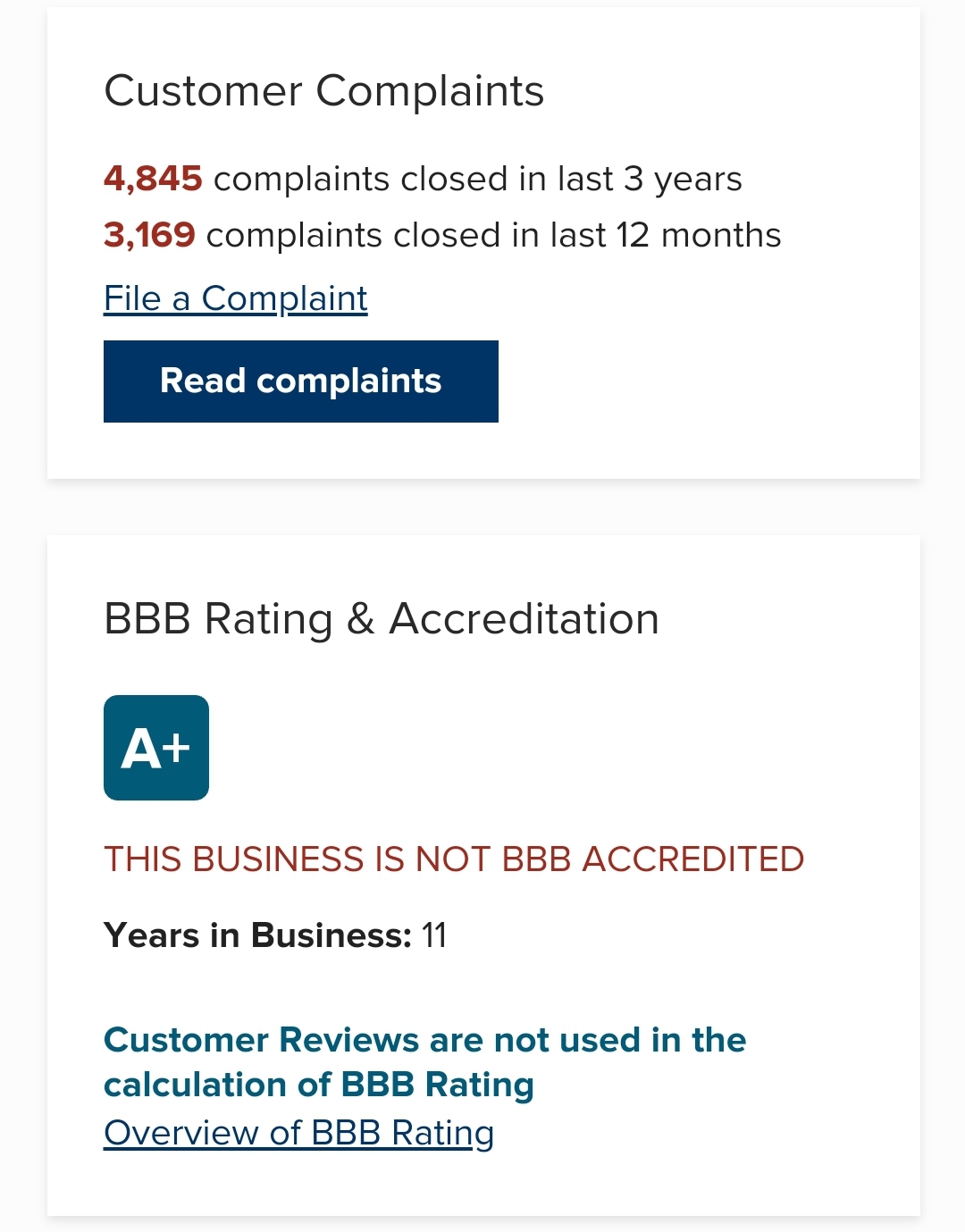
Square’s contracts with its processors (and probably policies from its legal team) prevent the company from explaining why accounts get terminated. You may only get an alert that a payment infringed the terms and conditions or that your business model is unsubstantiated or high-risk according to complaints on BBB.
You might be able to get reactivated if you have the required paperwork. However, reinstatement doesn’t happen all the time. Some merchants get an alert, and then they provide the papers Square requires for verification purposes, only to get a notice of termination.
An account termination notice is absolute, and generally, Square will keep any funds for up to 180 days to cover any chargebacks before giving back the funds to you. Sometimes, Square goes to the extent that they encouraged you to consider an alternate payment form to repay consumers.
Final Verdict.
There are some very notable basic similarities between Stripe and Square: They are both third-party processors with various resources that help merchants sell online. Neither one is ideal for high-risk sectors, and there is a long list of companies with which neither processors can partner with. But beyond that, both Stripe and Square offer instruments that tailor to a large variety of industries. They’ll both expand with your business, making it simple to scale up.
Though the two processors have some similarities in terms of business model, it’s also pretty clear that what each company perform best is different from one another.
Square is a stunning all-in-one processor with a solution fully prepared for you. You can sell in a shop, on the go, and online — and get all of your data and payments and orders accumulated in one simple, intuitive dashboard. There is a wide range of add-on devices that allow you to combine under one name a host of business functions, and they are promised to operate well together.
if you have little technical experiences, Square is going to be much easier to get started with and to work through the various features
Stripe specializes in web payments (both on the web and in-app), and its resources enable companies to appeal to consumers around the world. The global appeal indicates that Stripe is now a big powerhouse, from the exchange rate displays to the sheer magnitude of payment methods embraced.
Not only that but with Stripe’s APIs and documentation, a skilled developer could create all sorts of payment modifications for a business. Company owners who do not have an in-house developer or do not have a lot of technical expertise may at first find it difficult to understand how to use Stripe, especially if they want to do more than just incorporating it with programs for shopping carts.
Here is a simple tidy summary for you who skipped everything above.
| Stripe is best for | Square is best for |
|---|---|
| Businesses Operating with International eCommerce: Stripe supports a significant number of currencies and payment methods, making it an ideal choice for companies doing business worldwide. | Physical Businesses: If you only do a minority of your business online, you may profit more from Square’s POS |
| Businesses That Are Operating Completely Or Virtually Online: Don’t get me wrong, Stripe does support POS, though it is not where Stipe performs best. Its ecosystem is best for online transactions. | Businesses Wanting A Straightforward Solution: If you are not a developer or your team doesn’t have any developer, or you do not want to waste money on one, Square is tailored to get you started right off the bat, with access to major integrations as well. |
| Businesses Having A Team Of Developers: Stripe is developed mostly for … developers. Though this can prove inconvenient at times for ordinary people, one (or two) skilled programmer should be able to get Stripe up and running with little exertion (owing to Stripe’s thorough documentation and tutorials) | Businesses Wanting both Productivity and Management Support: Square provides a wealth of tools to assist you in managing your customer base in particular and your company in general. |
Related Posts:
New Posts







